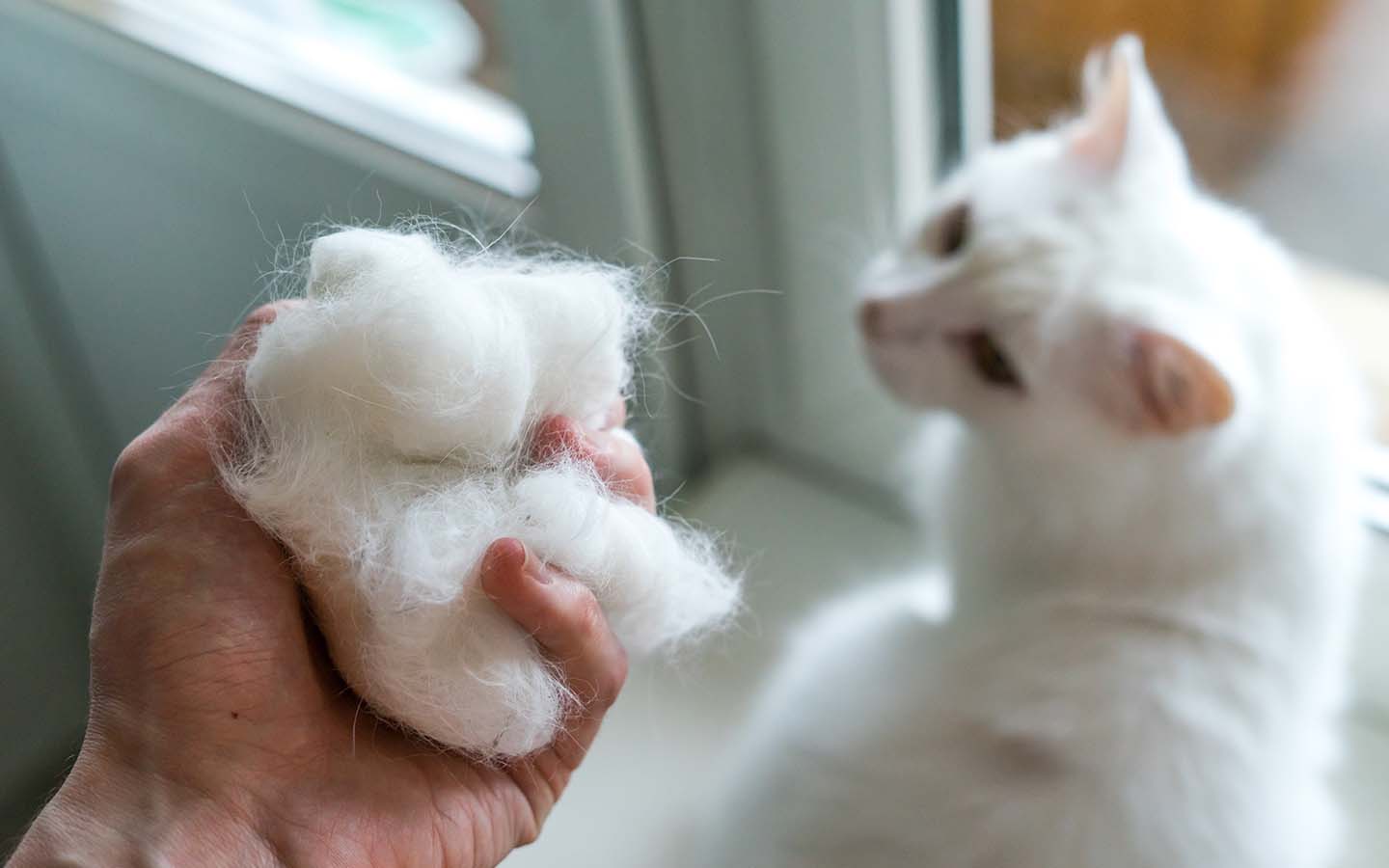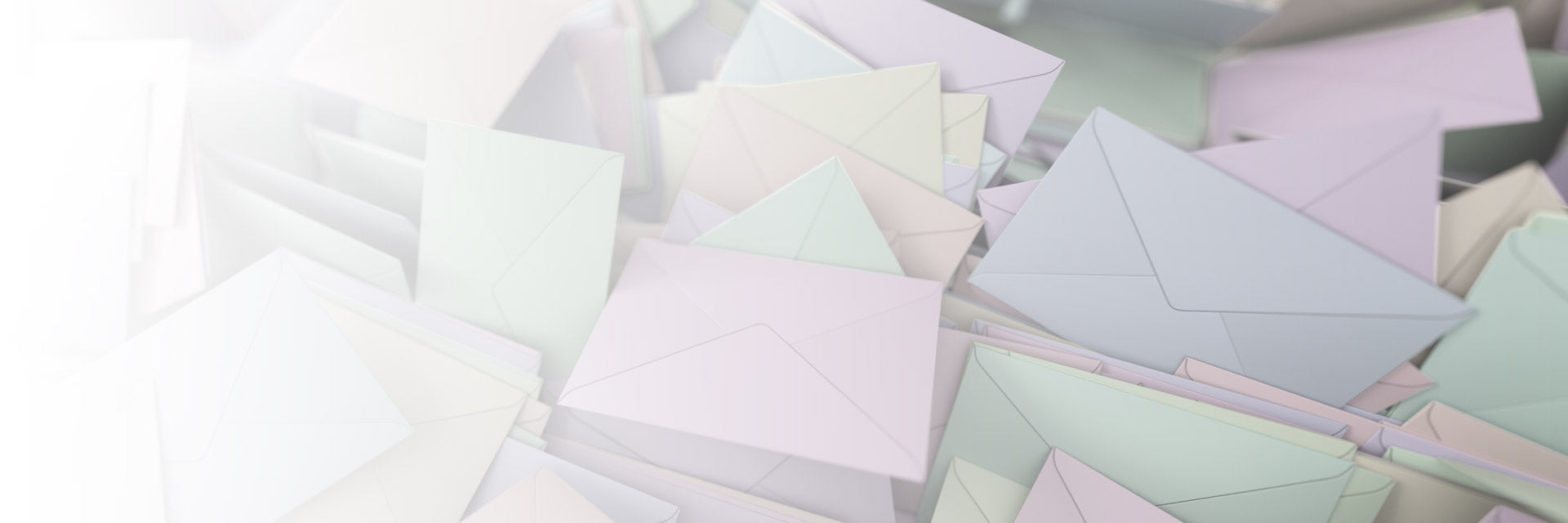Hairballs are nothing unusual in everyday life with cats: During their regular grooming, these clean-loving animals swallow a lot of hair, which they then excrete in their feces or regurgitate. The sight of vomited hairballs is therefore a daily occurrence for cat owners. However, hairballs can also be dangerous and, if they occur in excess, can affect your furry friend's health. Find out here how hairballs develop in cats, what risks they pose and how you can prevent complications caused by hairballs.
What are cat hairballs and how do they form?
Hairballs are accumulations of cat hair that form real tangles in the animal's stomach. The technical term for hairballs is trichobezoars. Hairballs are formed when cats groom their fur intensively. There are small hooks on the tongue of cats that are ideal for removing dirt particles, parasites and fallen hair. This is why cats swallow a lot of hair when grooming their fur. These have no place in the cat's stomach and are either excreted in the feces or vomited.
Vomiting and excreting hairballs is a natural behavior of four-legged friends to keep their bodies healthy. Usually, excretions occur once or twice a week. However, some factors mean that hairballs occur more frequently at certain times and in certain cat breeds.
[VC+Sensitive2]
Risk Factors for Hairballs
Some cats naturally tend to swallow more hair than others. As a result, they are more likely to excrete and vomit hairballs. Problems arise when cats swallow too much hair and have difficulty removing the hairballs from their stomachs. Risk factors that can cause an increased occurrence of hairballs in cats include the following:
- Long-haired cat breed: When it comes to cat breeds, long-haired cats are particularly prone to hairballs. Long-haired cat breeds include Maine Coon, British Longhair, Norwegian Forest Cat and Siberian Cat.
- Cat breed with thick fur: Not only long-haired cats, but also those with a particularly thick undercoat tend to swallow more hair and thus develop hairballs more often. In addition to long-haired cats, short-haired cat breeds such as the British Shorthair also have a thick undercoat.
- Time of coat change: Cats shed their fur twice a year: in autumn they exchange their light summer fur for a thicker winter coat and vice versa in spring. At this time, a particularly large amount of hair falls out, so the cats also excrete more hairballs.
- Excessive grooming: Cats with a Cats with an excessive tendency to groom also swallow more hair than their counterparts. If there is a serious behavioral disorder, veterinarians also speak of psychogenic licking alopecia. Affected cats lick their fur so frequently and intensively that they cause bald spots and inflammation.
- Obesity, age and lack of exercise: Overweight and old cats, as well as lazy cats that do not get enough exercise, are at an increased risk of suffering from large hairballs. This is because these animals often suffer from intestinal sluggishness. As a result, the swallowed hair can no longer be removed from the stomach and intestines as easily, which can lead to health problems.
Hairballs as a Danger for Cats
If too much hair accumulates in a cat's stomach and intestines, it becomes increasingly difficult to excrete it. In the body, the cat hair combines with fat from the food to form larger hairballs. This is a vicious circle: if your cat has difficulty vomiting the hairball or expelling it with the stool due to its size, more and more hair will accumulate over time, causing the hairball to grow. Over time, it can harden and become heavy in the stomach - similar to a stone.
For this reason, hairballs pose a serious risk to your furry friend's health and can have some unpleasant consequences for the stomach and intestines. Let's take a look at what these are together.
1. Limited activity of the stomach
Large hairballs in the stomach can make the organ sluggish and limit its normal functioning. As a result, pre-digested food stays in the stomach for too long and causes problems such as burping, heartburn and stomach ache .
2. Gastritis
The hairballs in the stomach can affect and injure the stomach lining, causing gastritis. Typical symptoms are Loss of appetite , severe abdominal pain, a cramped posture and a dismissive behavior, as the cat suffers . If the inflammation remains undetected for a long time, apathy and Weight loss due to refusal to eat can also occur. Read more about the symptoms and treatment of gastritis in our guide on the topic gastritis .
3. Intestinal inflammation
The intestine can also be injured by hairballs rubbing against the intestinal wall and become inflamed as a result. In the case of intestinal inflammation, severe abdominal pain, loss of appetite and weight, as well as apathy in advanced stages, are also the result. In addition, there are problems with defecation and, as a result, sometimes diarrhea and Vomiting . Owners often find a layer of mucus and Blood in or around the stool , which serves as a clear warning sign. Affected cats should be taken to the vet immediately.
4. Constipation leading to intestinal obstruction
Hairballs are foreign bodies in the stomach and intestines that hinder normal digestion and make it difficult for the cat to eat and keep food down. The animal tries to get rid of the hairballs through vomiting and diarrhea. If this is not successful because the fur balls are already too large, constipation can occur. Signs of this are that the cat is passing less and less stool and that it is irregular and that attempts to do so are very strenuous and painful. Due to the complications, many animals refuse to eat and become increasingly thin. Owners can recognize the symptoms more quickly in indoor cats, while in outdoor cats it can take some time before weight loss and feeling unwell .
If the condition does not improve, constipation can quickly develop into intestinal obstruction. If, in addition to the symptoms mentioned above, your cat is apathetic, trembling and has pale mucous membranes, it may be suffering from shock. An intestinal obstruction can be life-threatening and should therefore be treated as quickly as possible.
Diagnosis and treatment of large hairballs
If you suspect that your cat is suffering from hairballs in its body and is having difficulty getting rid of them, you should see a vet as soon as possible. If you wait too long, one of the complications mentioned above, such as inflammation or intestinal obstruction, could occur. The vet can examine your furry friend in detail and determine whether hairballs in the stomach or intestines are affecting it. To do this, the doctor can palpate the body to feel for possible hardening caused by hairballs. Imaging procedures such as an X-ray or ultrasound examination can also be used to make a diagnosis.
The vet can use laxatives or lubricants to try to make it easier to pass the hairballs. In the case of constipation, glycerine suppositories can also help. If a hairball is already too large and the cat can no longer expel it naturally through the intestines or esophagus, it may need to undergo surgery. To prevent this from happening, there are a few things you can do to prevent hairballs in your cat.
Preventing Hairballs in Cats
To avoid the health problems listed above in your furry friend, you can prevent hairballs in cats in a number of ways. It is important to keep the number of swallowed hairs as low as possible and to make it easier to excrete them.
- cat grass: Cat grass refers to various plants in the grass family. The grass triggers a gag reflex in cats and helps them to get rid of hairballs in their stomachs. In the wild, outdoor cats instinctively eat freely growing grass to create this effect. This is more difficult for indoor cats: sometimes they nibble on houseplants instead. This is dangerous, as many plants such as orchids, tulips, poinsettias or lilies can be poisonous to the animals. So support your indoor cat by placing one or more pots of special cat grass around the apartment.
- malt paste: Malt paste is made up of a lot of fiber, fats and oils and has a mild laxative effect. The fiber stimulates the intestines and expels hairballs more quickly. The oily and fatty nature of the paste also makes excretion easier.
- Nutrition: In general, you can support your cat's diet by using food that is high in fiber. You can also add a few drops of oil to the wet or dry food to facilitate intestinal transit. However, you should only use oil that is suitable for consumption by cats. It is best to discuss this measure with your veterinarian beforehand.
- Several small meals: You can also adjust your cat's diet so that you feed him several small meals of wet or dry food throughout the day. This also stimulates intestinal activity and ensures that hair is transported out of the body more quickly.
- Brushing and combing: Another useful tip is to help your cat groom its fur. Get a brush that is tailored to your cat's fur and brush your cat's fur regularly. This way you can remove dead hair by hand and prevent your cat from swallowing it during grooming.
If your cat has had problems with digestion and vomiting due to hairballs and is therefore emaciated and weak, you should feed it back to health. Our KATTOVIT Restorative Treatment is specially tailored to weakened cats and helps them to regenerate. Thanks to the easily digestible and concentrated recipe, the Restorative Treatment provides your furry friend with important nutrients and an increased energy content.






